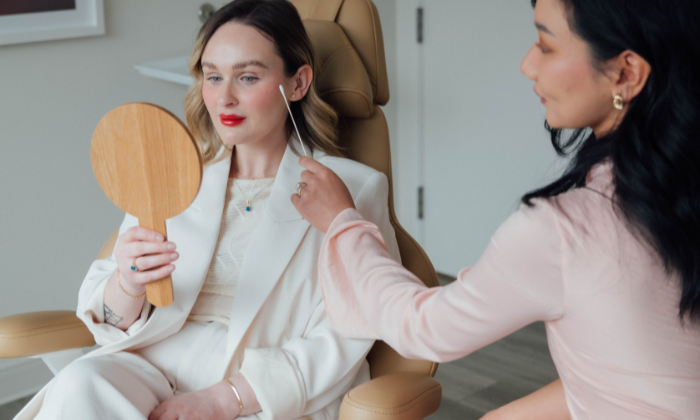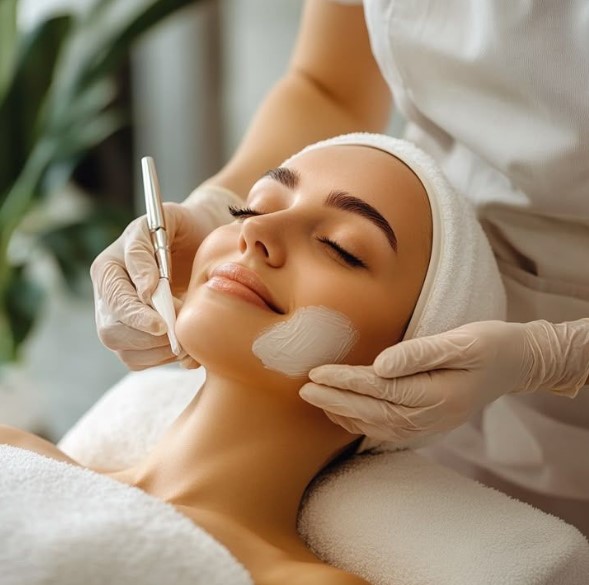Hooded-eye Botox has become a go-to solution for individuals seeking to address drooping eyelids or a hooded eye appearance. This minimally invasive treatment provides a way to achieve a more youthful and refreshed appearance without undergoing surgery. However, before scheduling your appointment, there are several key details you need to understand. From how the treatment works to its benefits and limitations, here are 11 important facts about hooded eye Botox to guide you.
Fact 1: Botox Targets Specific Muscles
Botox works by temporarily relaxing the muscles responsible for causing the hooded appearance of the eyes. Specifically, small, precise amounts of Botox are injected into targeted areas around the eyes, particularly the muscles that pull the eyelids downward. By relaxing these muscles, Botox lifts and smooths the eyelids, giving the eyes a more open, refreshed, and youthful look. This makes it an effective, minimally invasive option for addressing mild to moderate hooding.
Fact 2: It Is a Non-Surgical Option
One of the biggest advantages of hooded eye Botox is that it’s a non-surgical treatment. Unlike blepharoplasty (eyelid surgery), which involves incisions, sutures, and a significant recovery period, Botox does not involve any cutting or invasive procedures. The treatment is quick, relatively painless, and requires almost no downtime, making it an appealing choice for people who want to improve their appearance without the risks or lengthy recovery associated with surgery.
Fact 3: Results Are Temporary
While Botox for hooded eyes can deliver noticeable and effective results, they are not permanent. The effects typically last anywhere from three to four months, depending on factors such as your metabolism, lifestyle, and the rate at which your body breaks down the Botox. For some individuals, the results may last slightly longer or shorter. Schedule periodic treatments with your provider to maintain the benefits of lifted and youthful-looking eyelids. Over time, consistent treatments can help you achieve a more long-term improvement in your appearance.
Fact 4: It Is a Precision-Based Treatment
The success of hooded eye Botox relies heavily on precision and expertise. Unlike other cosmetic treatments, Botox injections must be administered with accuracy to target the specific muscles causing the hooded effect. A trained and experienced professional will know the exact placement and dosage required to produce balanced, natural-looking results. However, errors in technique or placement can lead to complications, such as droopy eyelids, uneven effects, or other unwanted outcomes. This is why choosing a qualified provider is essential.
Fact 5: A Consultation Is Essential
Before undergoing Botox for hooded eyes, a thorough consultation with a qualified provider is a crucial first step. During this meeting, the practitioner will assess the severity of your hooded eyelids, evaluate the structure of your face, and discuss your aesthetic goals. This is also the time to ask any questions or share concerns you may have. The provider will ensure that Botox is the right option for you and customize the treatment plan based on your unique needs. This personalized approach enables the achievement of the best possible results.
Fact 6: Not Everyone Is a Candidate
Hooded eye Botox isn’t a one-size-fits-all solution. While the treatment is a great option for mild to moderate hooding, it may not be suitable for individuals with severe hooding or significant excess skin in the eyelid area. In these cases, surgical intervention, such as blepharoplasty, might be recommended to achieve the desired outcome. Additionally, Botox may not be suitable for people with certain medical conditions, allergies, or sensitivities. A consultation with an experienced provider will help determine whether this treatment is a good fit for you.
Fact 7: There Is Minimal Downtime
One of the reasons hooded eye Botox is so popular is that it requires minimal downtime. Most people can return to their normal daily activities almost immediately after the procedure, making it a convenient option for those with busy schedules. While you might experience some mild swelling, redness, or bruising at the injection sites, these side effects typically resolve within a few days. Overall, the lack of significant downtime means you can enjoy the results of your treatment without much disruption to your routine.
Fact 8: Results Develop Over Time
Unlike surgical procedures, which yield immediate results but require a significant recovery period, Botox results develop gradually. After your appointment, you may start to notice subtle changes within a few days. However, full results typically take 10 to 14 days to become visible. This gradual effect allows the transformation to appear natural, as if your refreshed look happened effortlessly. Plan your treatment accordingly if you have a special event or occasion approaching.
Fact 9: The Procedure Is Quick and Relatively Painless
Getting Botox for hooded eyes is a straightforward and quick procedure. The entire process typically takes less than 20 minutes, making it easy to fit into a busy day. Most patients report little to no discomfort during the injections, as the needles used are very fine. For those with concerns about pain, local numbing creams or ice packs can be used to ensure the treatment is as comfortable as possible. Once the procedure is complete, you can return to your day with minimal disruption.
Fact 10: Maintenance Is Needed for Long-Term Effects
If you love the way Botox enhances your eyelids and gives you a more youthful appearance, you’ll need to commit to regular maintenance treatments. Since the effects of Botox are temporary, scheduling follow-up appointments every three to four months will help you maintain consistent results. Over time, regular treatments can also help train the targeted muscles, potentially leading to longer-lasting effects. This commitment ensures you can enjoy the benefits of lifted, refreshed eyelids without interruption.
Fact 11: It’s More Affordable Than Surgery
While the costs of Botox treatments can vary depending on your provider and location, it’s generally much more affordable than eyelid surgery. For individuals seeking a more youthful and open-eyed appearance without the financial burden of surgery, Botox provides an accessible alternative. Additionally, the lack of recovery time associated with Botox means fewer disruptions to your daily life, adding to its overall cost-effectiveness as a cosmetic solution.
Enhance Your Look with Hooded Eye Botox
Hooded eye Botox is a fantastic way to address drooping eyelids and achieve a more open, youthful eye area. With its precision-based results, minimal downtime, and affordability, it’s no wonder so many people are turning to this treatment.
If you’re inspired by these 11 important facts about hooded eye Botox, our team is ready to assist you. Schedule a consultation for Botox in Santa Monica, CA, today and take the first step toward enhancing your natural beauty.

